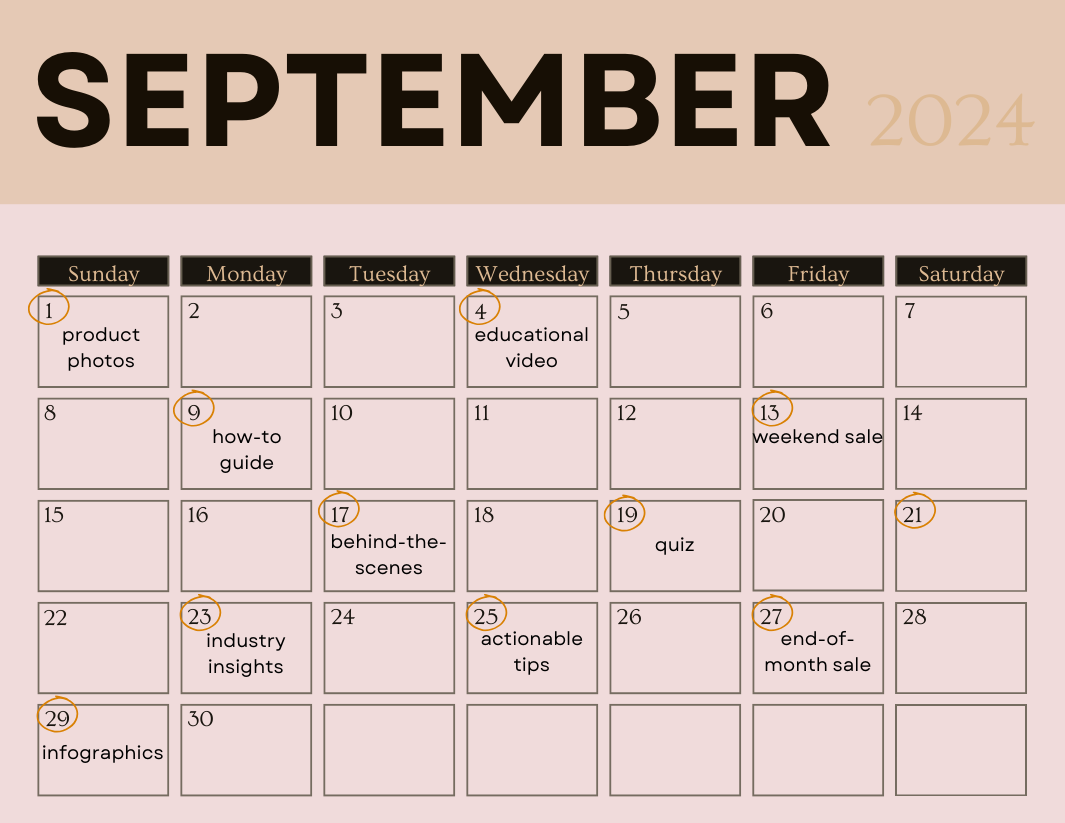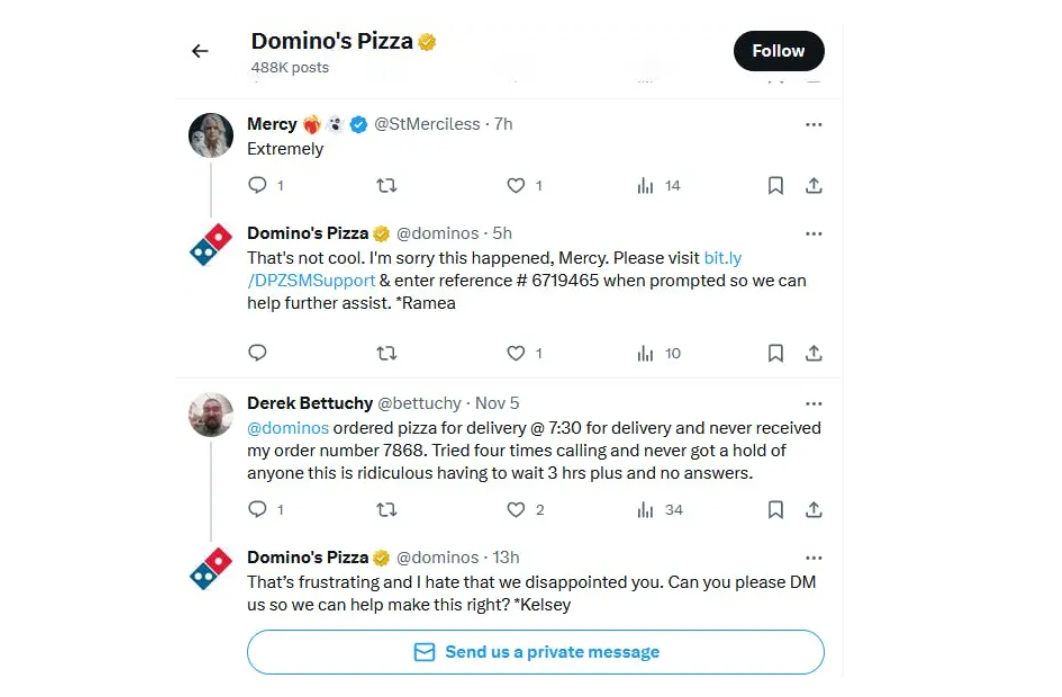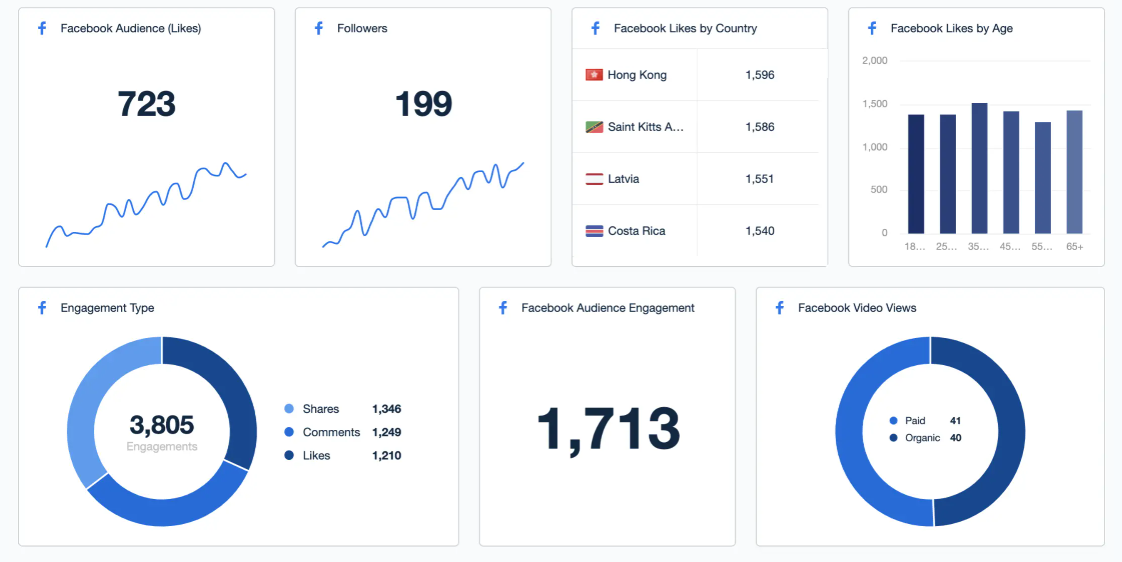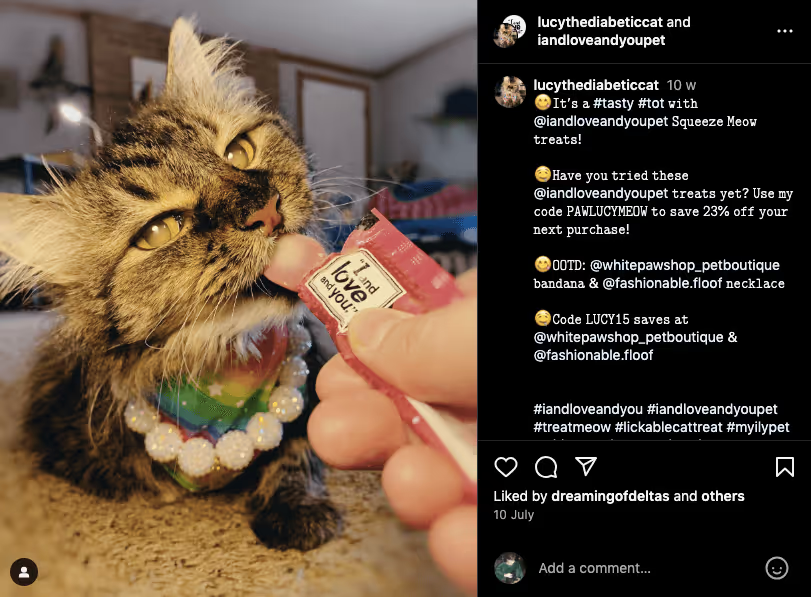According to a recent report by Gitnux, over 70% of small businesses use social media.

Source: Gitnux’s small business social media report
Still, plenty of businesses struggle to harness their full potential for growth and customer engagement. Social media offers unparalleled opportunities for reaching new customers, driving engagement, and building brand loyalty, but without the right strategies, it’s easy to feel overwhelmed.
How do small businesses use social media? For them, social networks can be a transformative tool, offering cost-effective ways to connect with customers, showcase products or services, and stand out in a crowded market. With the right approach, it becomes a powerful resource to foster customer relationships, increase visibility, and boost sales.
Today, we’ll explore actionable social media strategies designed specifically for small businesses. Whether you’re just getting started or looking to refine your current efforts, these tips will help you improve your online presence, engage more effectively with your audience, and grow your business.
Step 1: Choosing the right social media platforms
Creating a social media strategy for small businesses starts with finding and choosing the right platform to grow on. Spreading efforts across every social media can really be counterproductive. Trying to maintain an active presence everywhere often results in diluted content, limited engagement, and resource burnout. Instead, it’s more effective to focus on platforms that align best with your business type and where your target audience is most active. By concentrating on just a few platforms, you can create higher-quality content and build a more loyal, engaged following.
What is the easiest platform to grow on? Each major social media offers unique features and appeals to specific demographics and business types.

- Facebook: Known for its broad user base across age groups, Facebook is ideal for small business and social media advertising. It offers features like business pages, groups, and Facebook Marketplace, making it versatile for customer interaction and local marketing.
- Instagram: Perfect for visually driven brands, this platform supports social media growth through Reels, Stories, and Shopping features, making it an excellent tool for e-commerce or lifestyle brands.
- LinkedIn: A key player in social media management for a small business focused on B2B services or professional expertise. It’s particularly useful for networking and creating content that builds trust.
- TikTok: If you’re looking to engage younger audiences or want affordable social media marketing for a small business, TikTok’s video content format can be a great option. It’s one of the easiest platforms to grow on when you create relatable and authentic content.
To determine the best platforms for your business, start by analyzing your existing audience. Look at metrics from your website or current social channels to see where most of your traffic and engagement come from. Tools like Google Analytics can show social referrals, while Facebook Insights or Instagram Insights provide data on audience demographics and engagement. Also, consider using a survey or poll to ask your customers directly where they’re most active online.
Focusing your efforts where your audience already spends time will maximize your impact and help you build a more targeted, engaged community.
Step 2: Building a content strategy
A strong strategy is rooted in consistent and relevant content. Posting sporadically or without a clear purpose can confuse your audience or lead to low engagement. Consistency builds trust, while relevancy ensures your content resonates with your target audience. For small businesses, maintaining a steady stream of tailored content is essential for establishing a lasting social media presence and fostering brand loyalty.
First, you’ll need to start with creating a content calendar. A well-structured calendar ensures you maintain a balanced mix of content types and avoids the stress of last-minute posting.

Having a well-structured content calendar will help your business stay consistent, save time, and maintain a balanced mix of posts.
Here are some ideas on how you can structure your calendar:
- Promotional posts: Highlight your products, services, or upcoming sales. These posts should showcase your unique value while staying engaging and not overly salesy.
- Educational posts: Share tips, industry insights, or how-to guides related to your business. This helps position your brand as an expert.
- Behind-the-scenes posts: Give your audience a peek into your process, workspace, or team. It adds a personal touch and makes your brand relatable.
- Engagement-driven posts: Create polls, quizzes, or questions to interact with your audience and boost engagement.
- Seasonal or trendy posts: Tie your content to current events or social media trends to stay relevant and relatable.
Moreover, the type of content you post matters. Different formats resonate with different audiences, so variety is key to social media strategy:
- Photos: High-quality images of your products, team, or services create a visual connection.
- Videos: Short-form content (like Reels or TikToks) is among the most engaging formats for small businesses.
- Stories: Great for time-sensitive content like flash sales or event updates.
- Polls and Quizzes: Fun ways to interact with followers while gathering insights.
- Infographics: Shareable graphics that break down complex information in an easy-to-digest way.
To streamline your social media advertising for a small business, use scheduling tools to plan posts ahead of time. For instance, Google Calendar can help you organize your posts and plan out themes absolutely for free.
By structuring your content calendar, you’ll not only save time but also ensure your social media marketing strategy stays consistent and effective, helping your small business build lasting engagement and growth.
Step 3: Engage with your audience
Social media is not just a broadcast platform; it’s a space for conversation. For a small business and social media to truly work, it’s crucial to engage with your audience beyond posting content. Responding to comments, answering messages, and interacting with mentions helps build a stronger connection with your customers. Engaged audiences are more likely to become loyal followers and advocates, driving social media growth and long-term business success.
Building a community starts with active engagement. Here are a few tips:
- Respond promptly: Don’t leave comments or messages unanswered for too long. A quick response shows that you value your customers’ time and opinions.
- Acknowledge mentions: When customers tag your business or mention you in posts, thank them, or engage in the conversation. This makes them feel appreciated and encourages future interactions.
- Personalize your replies: Instead of generic responses, take the time to personalize your messages. It makes your business seem more approachable and authentic, which can drive loyalty.

Even big brands like Domino’s Pizza understand the importance of replying to their customers (source: Meltwater)
One of the most effective ways to engage your audience is by featuring user-generated content (UGC). Encourage your customers to share photos, videos, or reviews related to your products or services. Highlighting this content on your social media not only shows appreciation but also builds trust with potential customers. People are more likely to trust a recommendation from other customers than from businesses themselves.
- Ask followers to tag your business in their posts for a chance to be featured on your feed.
- Create a branded hashtag to encourage UGC and make it easier to find.

Here’s how Coca-Cola’s using branded hashtags in their marketing strategy
To spark more engagement and foster conversations, consider running polls, quizzes, or giveaways. These are fun, interactive ways to keep your audience involved while also gathering valuable feedback or expanding your reach. For example, you could run a poll on Instagram Stories asking followers to vote on new product designs or offer a giveaway in exchange for a follow or share. These types of posts not only increase engagement but also create excitement around your brand.
By focusing on community engagement and encouraging user-generated content, your small business can create a more interactive and loyal following, turning casual followers into passionate brand advocates.
Step 4: Leverage social media advertising
While organic posts are essential for building a presence, social media advertising can take your reach to the next level. By using paid ads, you can target a much broader yet more specific audience, allowing you to grow your follower base, drive traffic to your small business website, and ultimately increase conversions. Advertising is especially beneficial because it allows you to tailor your message to specific groups based on demographics, interests, and behaviors — making it much more effective than traditional marketing.

Here’s how a small hobby-related company promotes their product on Instagram
Instagram and Facebook advertising for small business is a great choice for those with limited resources as they offer cost-effective options to increase visibility. While running ads, pay attention to the following:
- Targeting: One of the key benefits of social media advertising is the ability to pinpoint your ideal audience. You can set parameters based on location, age, interests, and even specific behaviors like purchasing habits. For example, if you're a local coffee shop, you can target people within a certain radius of your business. Moreover, LeadEnforce can help build effective audiences based on your competitors’ groups or local business pages. You can sign up for your free 7-day trial here.
- Start Small: Begin with a small budget to test your ads. Affordable advertising doesn’t require a huge spend to be effective. You can start with as little as $5-10 a day and scale based on performance.
Note that instead of creating entirely new ads, you can boost popular posts to increase their visibility. When you find that certain content is performing well organically, consider boosting it to reach a larger, more targeted audience. This option is a great way to amplify engagement without the need to create new content from scratch, saving you both time and money. Boosting works well for promotions, events, or posts with high engagement that you want to expand beyond your current followers.
Step 5: Track and analyze performance
To ensure your strategy is delivering results, it’s essential to track and analyze your performance. Without measurement, you’re flying blind — unsure of what’s working and what’s not. Regularly reviewing your efforts helps refine your approach, optimize your content, and allocate resources more effectively. Measuring success is the key to sustainable growth and making informed decisions for your social media marketing.
To monitor these metrics, you can use both native and third-party analytics tools:
- Native Analytics: Platforms like Facebook, Instagram, and Twitter offer built-in insights that show your content’s performance, audience demographics, and activity trends.

- Third-Party Tools: Services like Sprout Social, Hootsuite, or SEMrush provide more detailed reporting, comparative analysis across platforms, and scheduling capabilities to help with social media for small business.
Need a tip? Set monthly goals for each platform to keep your business on track. For example, you might aim to increase engagement on Instagram by 10% or drive 200 clicks to your website via Facebook ads.
Once you’ve tracked your performance, use the insights to adjust your approach:
- If your engagement rate is low, experiment with more interactive content like polls or questions.
- If CTR is below expectations, refine your call-to-action or targeting settings.
- If conversions are falling short, revisit your ad design or landing page to improve alignment.
By consistently tracking your efforts and making data-driven adjustments, you’ll create a more effective social media plan and see steady improvement in your small business’s online presence.
Step 6: Collaborate with influencers
Collaborating with micro-influencers or partnering with local businesses can significantly enhance your social media presence. These collaborations help boost credibility, expand your reach, and introduce your brand to a wider audience. Influencers already have the trust of their followers, while partnerships with local businesses can create a sense of community and mutual support. Both strategies can provide a cost-effective way to drive engagement and build brand awareness.

Influencers just know how to draw attention to the product, right?
Here are some ideas to make the most of social media marketing through partnerships:
1. Influencer Partnerships
- Product Reviews: Work with influencers to create authentic reviews of your products or services. This can drive both trust and interest.
- Giveaways: Team up with an influencer to host a giveaway. Followers typically engage more when there’s a chance to win something.
- Sponsored Posts: Pay influencers to feature your product in a post, story, or video to introduce it to their audience.
2. Business Collaborations
- Joint Giveaways: Partner with another small business in a complementary niche to co-host a giveaway. For example, a coffee shop could team up with a local bakery.
- Content Swaps: Exchange guest posts, shoutouts, or shared campaigns with other businesses to reach each other’s audiences.
Finding the right influencers or partners in your niche is crucial for effective collaboration. Here’s how to start:
- Research: Look for micro-influencers (5k–50k followers) in your industry who align with your brand values. Manual searches on Instagram and TikTok can help with this.
- Engagement over Followers: Prioritize influencers or businesses with high engagement rates rather than just a large follower count. Their audience is likely more invested.
- Reach Out: Send a friendly message or email outlining the mutual benefits of collaborating. Be specific about what you’re offering and what you’re looking for in return.
- Set Clear Terms: Whether it’s a free product for a review or co-branding a giveaway, establish clear expectations to avoid confusion later.
By teaming up with influencers and other businesses, you can enhance your strategy, foster community, and build trust with your audience — all while expanding your brand’s visibility.
Step 7: Experiment with new features and trends
Social media is always evolving, and embracing new features and trends will be a real social media help for a small business. Platforms regularly introduce tools and updates designed to enhance user experience and engagement. For example, the rise of short-form videos and live streaming has opened new avenues for connecting with audiences. Staying trend-savvy gives your business a competitive edge and ensures your approach stays fresh and relevant.

Netflix, for instance, always tries to stay ahead by including trendy memes in their posts.
To keep up with the latest in social media marketing, explore these features:
- Live streaming: Use live video to host Q&A sessions, product launches, or behind-the-scenes tours. It’s an interactive way to connect with your audience in real-time.
- Reels and Stories: Platforms like Instagram, Facebook, and TikTok are prioritizing short-form video content. Reels and Stories are great for showing quick tips, promotions, or a day in the life of your business.
- Social commerce: Features like Instagram Shopping, Facebook Marketplace, or Pinterest’s Product Pins allow you to sell directly through your social media platforms, making it easier for followers to purchase from you.
Start small by experimenting with one new feature or trend each month. For instance:
- Try a live stream to engage directly with your audience.
- Post a Reel or short video highlighting a product or service.
- Set up an Instagram Shop or explore Facebook Marketplace to expand your reach.
Track how your audience responds to these experiments and use the results to refine your social media marketing strategy. By staying proactive and open to innovation, your small business and social media presence will stay ahead of the curve while remaining adaptable to changing trends.
Conclusion
Social media can give a significant boost to small businesses, but it takes a thoughtful approach to make it work. Here’s a quick recap of what we’ve covered:
- Choosing platforms: Focus on the social media platforms that align with your audience and business goals.
- Building a content strategy: Plan consistent, relevant content to engage your followers and build loyalty.
- Engaging with the audience: Foster two-way conversations and create a sense of community.
- Leveraging ads: Use targeted, budget-friendly ads to expand your reach and drive traffic.
- Analyzing performance: Track metrics to refine your strategy and stay effective.
- Collaborating with influencers: Work with others to boost credibility and reach.
- Staying on top of trends: Experiment with new features and stay adaptable to changes.
It’s time to take the next step. Review your current strategy and pick one of the tips from this article to implement right away. Whether it’s setting up your first ad, trying out a new platform feature, or creating a content calendar, small changes can lead to big improvements. Remember, every small step brings you closer to mastering social media for small business and achieving meaningful growth.

